Listen to the interview with Women’s Telehealth President Tanya Mack as she was a guest on the podcast “Really Know Your Customer”. Click the link below to hear how telemedicine has taken the medical field by storm.
Listen to the interview with Women’s Telehealth President Tanya Mack as she was a guest on the podcast “Really Know Your Customer”. Click the link below to hear how telemedicine has taken the medical field by storm.
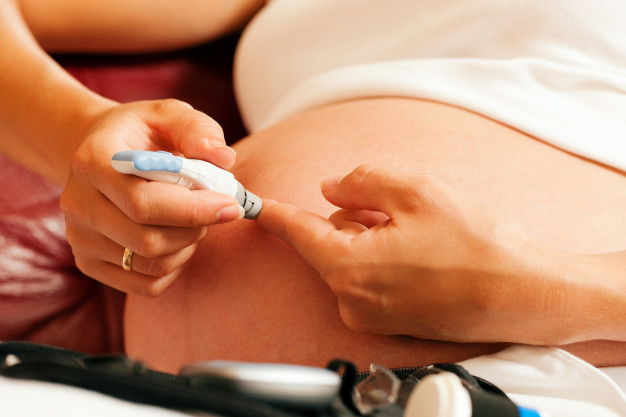
An 18 year old patient presented in a rural area to the local OB physician when she was 16 weeks pregnant. Her OB history showed she had been diagnosed with Type I Diabetes at age 5. She had been seeing a local endocrinologist but was told he would not follow her and manage her insulin during pregnancy.
The close diabetic monitoring required throughout the pregnancy would need to be provided by a Maternal-Fetal Specialist. Because the closest one was approximately 1 ½ hours from the patient’s home, she was referred to Women’s Telehealth by her local OB physician for co-management. Women’s Telehealth provided MFM care through telemedicine visits.
Of additional concern was that the patient was noted to be non-compliant in her insulin regime and diabetic care.
. . . . . . . . . . . . . . . . . . . . . . . . . . . . . . . . . . . . . . . . . . . . . . . . . . . . . . . . . . . . . . . . . . . . . . .
The prevalence of diabetes in pregnancy in the U.S. is increasing. Pre-existing, Type I diabetes confers an increased and more significant risk to both mom and baby than gestational diabetes. Tight blood sugar control is critically important at all stages of pregnancy. Uncontrolled diabetes in pregnancy can lead to such complications as fetal anomalies, pre-eclampsia, fetal demise, macrosomia, neonatal hypoglycemia and spontaneous abortion.
To learn more, visit: https://www.cdc.gov/pregnancy/diabetes-types.html
. . . . . . . . . . . . . . . . . . . . . . . . . . . . . . . . . . . . . . . . . . . . . . . . . . . . . . . . . . . . . . . . . . . . . . .
Our goal in sharing patient case stories is to show the role and possibilities Women’s Telehealth plays in accessing high risk situations and to help turn patient and OB provider concern into the best possible care plans and outcomes for mom’s and their babies. For more information, call our office at: 404.478.3017

How to successfully manage the complexities of gastroschisis in pregnancy is the focus of this Women’s Telehealth patient story. [Pictured above: Gastroschisis Baby – Post Op]
At the anatomy ultrasound scan at 17 weeks, the OB physician found that his 24 year old Caucasian patient had a suspected gastroschisis.
Gastroschisis is a birth defect in which the fetus’ intestines and/or stomach protrude outside the abdominal wall. A baby with this condition requires immediate surgery after birth to place the organs in the proper place in the abdominal cavity and close the hole in the abdominal wall. Hospitalization is also needed for an extended period of time to ensure that the baby’s feeding and digestive tract are functioning well. Most babies with appropriate care and surgery at birth will grow up to have normal lives. Successful outcomes often depend on early identification of this birth defect and preparing for surgery upon birth.
In addition to the suspected gastroschisis, other complicating factors included mom’s obesity, pregnancy-induced hypertension, low amniotic fluid, abnormal cervix and active kidney disease. The mom-to-be also needed an extra dose of oversight and compassion due to the loss of a baby during a previous pregnancy, caused by open neural tube defect.
The mom-to-be was referred by the OB physician to Women’s Telehealth maternal-fetal medicine (MFM) physicians for diagnosis and collaborative pregnancy management. Women’s Telehealth was asked to manage BOTH infant and maternal pregnancy complications.
. . . . . . . . . . . . . . . . . . . . . . . . . . . . . . . . . . . . . . . . . . . . . . . . . . . . . . . . . . . . . . . . . . . . . . . . . . . . . . . . . . . . . . . . . . . . . . . . . .
The CDC estimates that Gastroschisis affects 1 in every 1,900 babies born in the U.S. each year. The cause of this birth defect is currently unknown but researchers have speculated that potential causes may be adaptations in genes and/or the lifestyle or environment of the mother. Young, Caucasian women are the most common population to be at risk. For more information about this condition visit: https://www.cdc.gov/ncbddd/birthdefects/gastroschisis.html
. . . . . . . . . . . . . . . . . . . . . . . . . . . . . . . . . . . . . . . . . . . . . . . . . . . . . . . . . . . . . . . . . . . . . . . . . . . . . . . . . . . . . . . . . . . . . . . . . .
WT partners with OB/GYN physicians and healthcare facilities to provide the highest level of Maternal-Fetal Medicine (MFM) available through telemedicine. WT provides services in local hospitals, doctor’s offices and government clinics.
Our goal in sharing patient case stories is to show the role and possibilities Women’s Telehealth plays in accessing high risk situations and to help turn patient and OB provider concern into the best possible care plans and outcomes for moms and their babies. For more information, call our office at: 404.478.3017
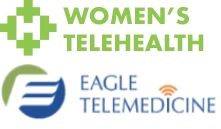
Women’s Telehealth and Eagle Telemedicine are working together to bring scarce, high risk OB services to more communities across the country!
Eagle Telemedicine is a premier telemedicine organization with a national network that brings a wide variety of healthcare providers to acute and critical access hospitals and health organizations. They provide night coverage and specialty care as well as fill staffing gaps, all exclusively by telemedicine. Eagle Telemedicine provides over 20,000 telemedicine patient encounters annually. Women’s Telehealth has completed over 31,000 maternal fetal medicine patient encounters/studies.
“This alliance will expand the capabilities of both companies,” said Women’s Telehealth President, Tanya Mack. “Eagle Telemedicine now adds maternal-fetal medicine to their service line and Women’s Telehealth gains expanded geographic coverage.” Builders and shapers in their respective areas of the telemedicine industry, the companies share mutual goals of bringing much needed specialty care to where it is needed and serving the underserved in a sustainable, cost effective manner. The companies’ combined strengths will allow high risk moms to keep their care local and allow hospitals and healthcare organizations to retain their patients and provide scarce specialty care.
For more information visit:
http://: https://www.eagletelemedicine.com/telemedicine-services/telespecialty-services/telematernal-fetal-services/
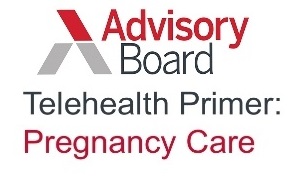
Virtual pregnancy care spans from prenatal to postpartum care. It incorporates a variety of telehealth modalities including audiovisual visits, remote patient monitoring and “live” and asynchronous store and forward imaging.
The Advisory Board is the best practice firm helping healthcare organizations worldwide improve their performance using a combination of research, technology and consulting. They have 12 offices on 3 continents and publish to over 9,000 healthcare organization outlets.
Recently, the Advisory Board published the piece, “Telehealth Primer: Pregnancy Care.” The publication features four innovative healthcare organizations using telehealth tools to deliver different aspects of pregnancy care and their business cases and results.
Women’s Telehealth is pleased to be featured in the primer for our work in providing maternal-fetal medicine services, delivered 100% via telemedicine, to help decrease preterm labor and improve access to maternal-fetal medicine providers.
The Mayo Clinic’s OB Nest program and the University of Utah were also featured in the Primer for their work in delivering antepartum visits virtually vs. in-person visits, to improve patient satisfaction with the same clinical outcomes.
The Primer also featured the University of Pennsylvania for delivering postpartum visits via remote patient monitoring to ease post-delivery care and outcomes for new moms.
For a copy of this informative primer, visit: https://www.advisory.com/research/service-line-strategy-advisor/resources/2018/telehealth-primer-pregnancy-care
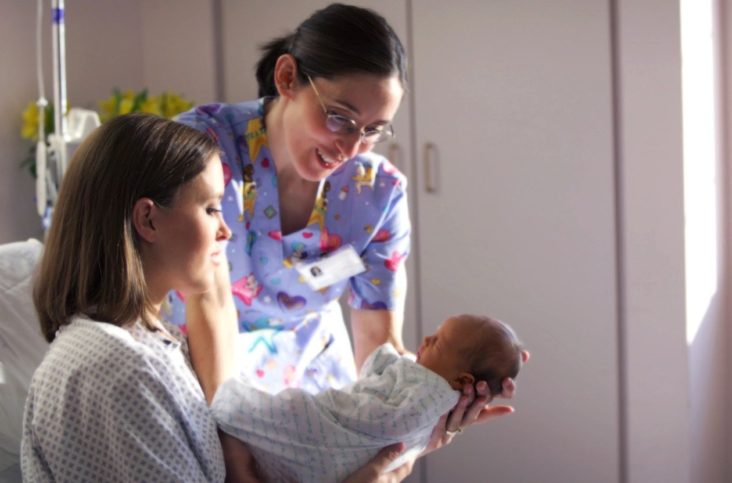
Unborn baby’s high birth defect risk is the focus of this Women’s Telehealth patient story.
This Pregnancy’s Challenge: In a prior pregnancy, prenatal tests indicated positive results for Downs Syndrome for this mom-to-be. Fortunately, this proved not to be the case and her baby was indeed born healthy. However, with the next/current pregnancy, the patient was extremely worried when “Quad Test” results [deleted: during her current pregnancy] reflected a 1:56 risk for Trisomy 18 and the ultrasound conducted at the local hospital was inconclusive.
Trisomy 18, also known as Edwards Syndrome, is similar to Downs Syndrome, as they are both caused by a chromosome abnormality. Unlike Downs Syndrome however, Edwards Syndrome is potentially more life-threatening during the neonatal period and early life. It was very important that the mother and unborn child receive high-risk OB Specialist care.
The Team’s Actions: Because there were no MFM Specialists in the patient’s community and it was over an hour drive to the closest one in Albany, GA, the patient opted for MFM care via telemedicine through Women’s Telehealth based in Atlanta. WT was able to offer the patient in-depth evaluation and consultations via telemedicine directly from her local OB physician’s office.
The Results:
WT’s progressive telemedicine capability, providing the right specialist at the right time, supported the patient safely through an uncertain, emotional journey. In this case, the WT team was able to allay the patient’s concerns and celebrate a positive outcome!
. . . . . . . . . . . . . . . . . . . . . . . . . . . . . . . . . . . . . . . . . . . . . . . . . . . . . . . . . . . . . . . . . . . . . . .
Birth defects are a common, critical and costly condition affecting 1 in every 33 babies born in the U.S. each year.* For more information about birth defect stats, prevention, diagnosis and aftercare, visit: https://www.cdc.gov/ncbddd/birthdefects/facts.html
*Centers for Disease Control and Prevention. Update on Overall Prevalence of Major Birth Defects–Atlanta, Georgia, 1978-2005. MMWR Morb Mortal Wkly Rep. 2008;57(1):1-5.
. . . . . . . . . . . . . . . . . . . . . . . . . . . . . . . . . . . . . . . . . . . . . . . . . . . . . . . . . . . . . . . . . . . . . . .
Our goal in sharing patient stories is to show the role and possibilities Women’s Telehealth plays in accessing and intervening in high risk pregnancies. We help turn patient and OB provider concern into the best possible care plans and outcomes for mom and their babies.
For more information, call our office at: 404.478.3017
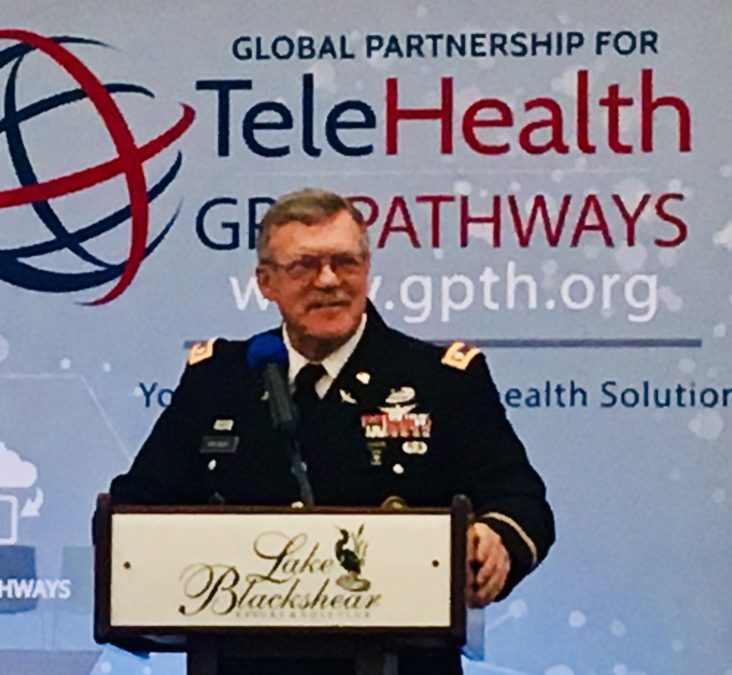
On a spring day at Lake Blackshear at the Global Partnership for Telehealth annual GA conference, I heard one of the most inspirational keynote speeches I’ve ever heard about my telehealth profession. Dressed in full uniform, LTC(R) Daniel R. Brewer delivered the moving address, “A Soldier’s Perspective on Healthcare.” Along with a series of impactful pictures, Brewer’s presentation about the intersection of telehealth and war unfolded. The audience was spellbound.
LTC Brewer served several tours in Afghanistan and Iraq and had the opportunity to work with Generals David H. Petraeus and James N. Mattis. Brewer solved environmental problems we often see or associate with war, when we are viewing from afar. However, burn pits, hazardous waste, medical waste, oil spills and improper water disposals were issues that needed his solutions. But then he was injured.
LTC Brewer clearly outlined for us from his first-hand perspective, how once a soldier is injured, the task at hand quickly focuses on staying alive. Access to immediate healthcare is essential and that’s what telehealth provides. Healthcare access = ALIVE. LTC Brewer pointed out that he and many other soldiers may not be here today if not for the remote care provided by the Department of Veterans Affairs.
Telehealth is one of the rare success stories of war. The U.S. military has been a leader in telemedicine for decades, employing technologies ranging from pictures from the battlefield, to direct emergency treatment, to mental telehealth visits for PTSD once vets are home. Telehealth at any point, delivered to an injured soldier, improves healthcare accessibility.
The military is also using new technologies, including EEG devices, to measure concussion effects and the extent of brain injuries. They lead in telemedicine in so many ways and the U.S. VA system is one of the world leaders in the use, scope and scalability of telehealth during deployment, active duty and once our soldiers are home.
At the end of his speech, LTC Brewer challenged the audience to be strong telehealth “enablers,” in the positive sense of helping make things happen! He was the biggest enabler of all of us that day and we were proud of acknowledge him with a standing ovation.
In our business, we save high risk moms’ and babies’ lives often via telehealth. But from the audience that day, I had the opportunity to see how telehealth also prevents death and injury from a different perspective. It made me proud to be in the business of telehealth and so proud of our U.S. military taking care of their own, when the system is often criticized.
As we celebrate our freedom this week, Women’s Telehealth once again salutes LTC Brewer for sharing his amazing story!
~Tanya Mack, President
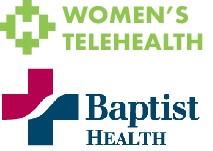
Baptist Medical Center East in Montgomery, AL, is seeing the positive results of keeping high risk obstetric patients local after partnering with Women’s Telehealth to add maternal-fetal services via telemedicine. The hospital opened their new perinatal center in late 2018 and became the first MFM telehealth operation in the state of Alabama. Prior to opening, high risk OB patients often had to travel over 2 hour to either Birmingham or South Alabama for MFM consultation and care. In their first several months in operation, hundreds of high risk OB patients have been cared for in their home community of Montgomery.
“This partnership has allowed Women’s Telehealth to expand services into the State of Alabama,” said Tanya Mack, President of Women’s Telehealth. “It has also helped payers in Alabama to see the value that adding access to high risk OB services to telehealth brings to rural Alabama by expanding their coverage.”
Jeff G. Rains, CEO of Baptist Medical Center East reports that, “Partnering with Women’s Telehealth has allowed us to fill our maternal-fetal medicine gap while improving and advancing our obstetric service line. Since the beginning of this partnership, we have seen a significant growth in patient encounters, outcomes and satisfaction. We are proud to be able to offer this service locally and proud to be partners with Women’s Telehealth.”
For more information about Baptist Medical Center East visit: https://www.baptistfirst.org/locations/baptist-medical-center-east
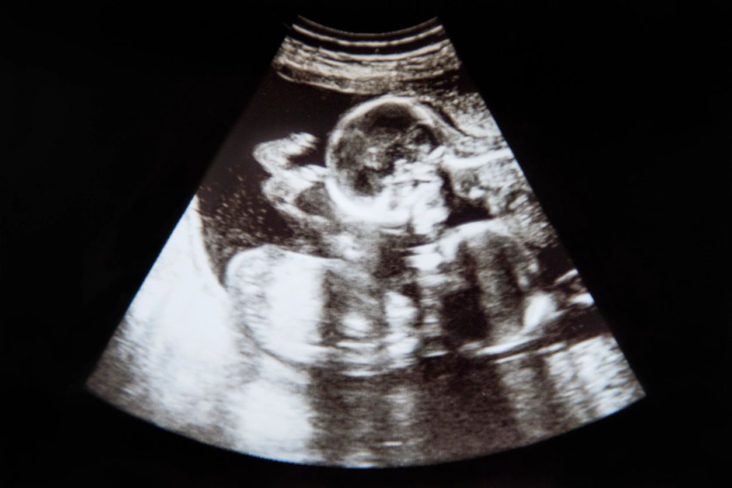
A twin pregnancy comes with risks for mother and babies and this Women’s Telehealth patient story presents one such serious complication.
This Pregnancy’s Challenge: The ultrasound conducted by the patient’s local OB physician revealed that one twin was growing and the other was not. Preliminary tests indicated a suspected “Twin to Twin Transfusion Syndrome,” caused by a blood vessel defect. Left untreated, the survival rate for both twins would be less than 15%. The mom-to-be needed immediate high-risk OB care and intervention. Because the closest MFM Specialist was two hours away and the patient would require consistent monitoring, she was referred to the OB/GYN’s MFM telemedicine partner in Atlanta, GA, Women’s Telehealth.
The Team’s Actions:
The Results:
Early identification and treatment of this often-fatal condition in a rural area, where there was no MFM specialist, led to the successful birth of these babies. Women’s Telehealth is pleased to have played a key role in arranging life-saving surgery through their network of high risk OB specialists and the use of continued monitoring via telemedicine!
. . . . . . . . . . . . . . . . . . . . . . . . . . . . . . . . . . . . . . . . . . . . . . . . . . . . . . . . . . . . . . . . . . . . . . .
Multiple births are much more common today than in the past. According to the U.S. Dept. of Health and Human Services, the twin birth rate has increased by over 75% since 1980, and triplet, quadruplet and high-order multiple births have increased at an even higher rate. To learn more, visit:
. . . . . . . . . . . . . . . . . . . . . . . . . . . . . . . . . . . . . . . . . . . . . . . . . . . . . . . . . . . . . . . . . . . . . . .
Our goal in sharing patient case stories is to show the role and possibilities Women’s Telehealth plays in accessing and intervening in high risk pregnancies. We help turn patient and OB provider concern into the best possible care plans and outcomes for moms and their babies.
For more information, call our office at: 404.478.3017

This Women’s Telehealth patient story is a twist on a birth defect – the mother’s rare birth defect, a diaphragmatic hernia at birth, now posed a pregnancy management challenge to mom and potentially baby.
The Pregnancy Challenge: A mom-to-be from middle Georgia was 26 weeks pregnant when she visited her local OB physician for the first time. When her initial OB assessment revealed that she had been treated for a Bochdelek Hernia at birth, her doctor promptly referred her to Women’s Telehealth for high-risk MFM Specialist care.
A Bochdelek Hernia is a rare, life-threatening congenital birth defect in which an opening in the diaphragm allows the baby’s abdominal organs to shift into the chest. The patient required surgery at birth to place the organs in the proper position and repair the opening in the diaphragm, and, a tissue graft was placed surgically during childhood. Rarely does a woman who has had this condition become pregnant herself later in life.
Of primary concern was: Would the growing baby in utero cause the graft to stretch or possibly break? How would the growing baby affect the patient’s health? Would she be able to push during delivery or would a C-section be required? These were the serious questions facing the patient and her obstetric team.
The Team’s Actions:
The Results: A healthy, > 5-pound baby girl was successfully delivered via C-Section at 35 weeks gestation! WT is happy to report that the mom’s diaphragmatic graft functioned well throughout the pregnancy and required no medical or surgical intervention.
Women’s Telehealth was pleased to be called on to help solve this rare pregnancy dilemma. It’s another example of how the advanced MFM technological services can be provided via telemedicine to treat complicated, high-risk prenatal cases often saving time and money as well.
Our goal in sharing patient stories is to show the role and possibilities Women’s Telehealth plays in accessing and intervening in high risk pregnancies. We help turn patient and OB provider concern into the best possible care plans and outcomes for moms and their babies.
For more information, call our office at: 404.478.3017